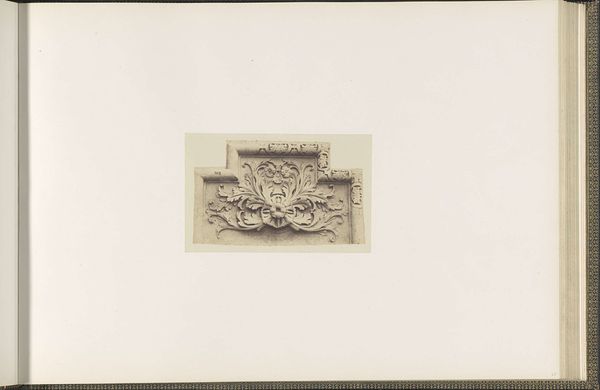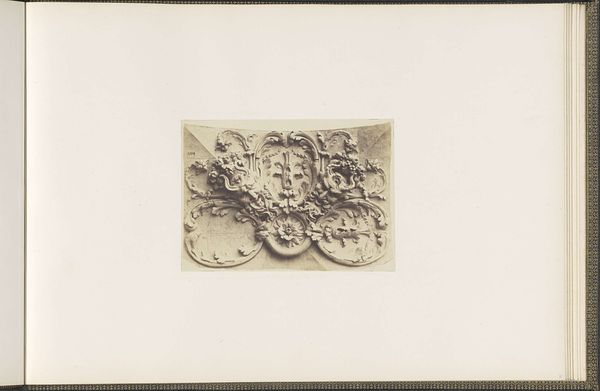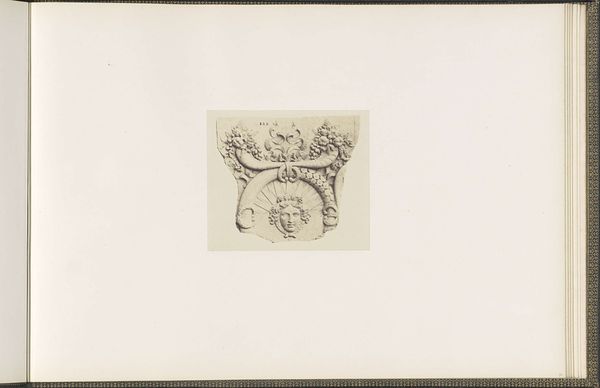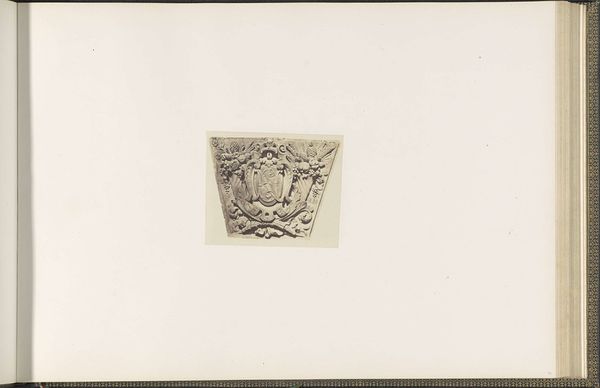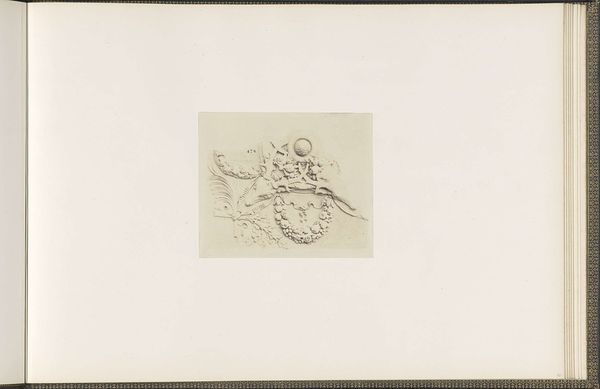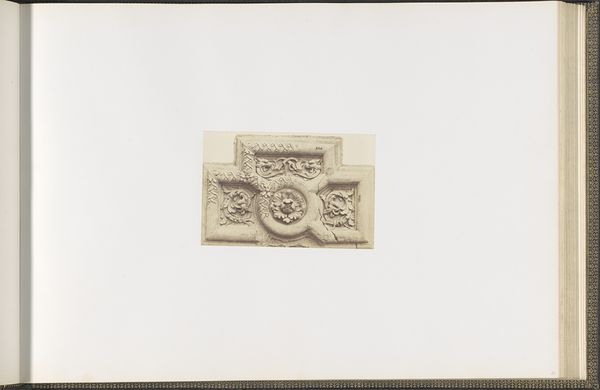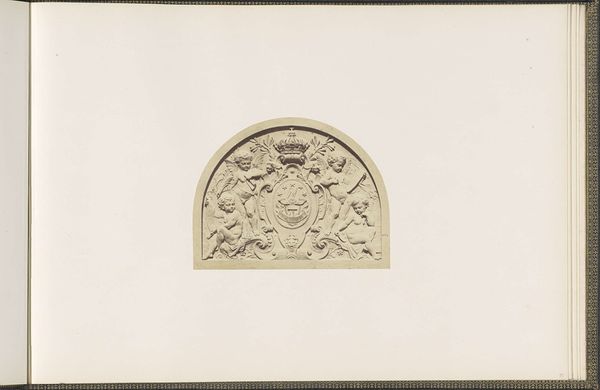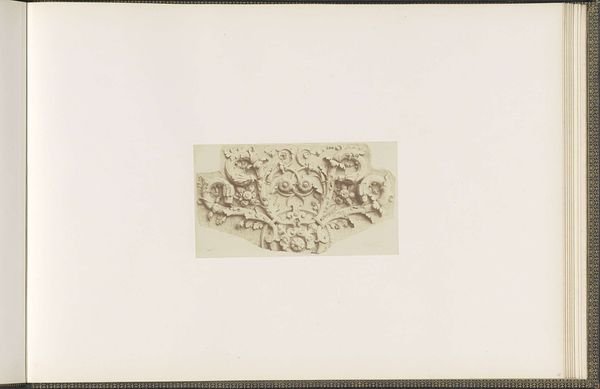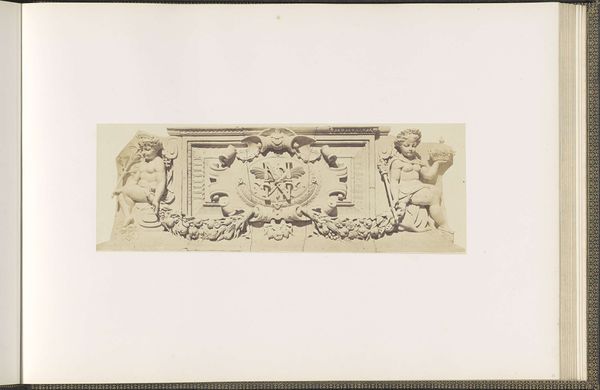
Gipsmodel voor een sluitsteen van het Palais du Louvre door Pierre Edouard Charrier c. 1855 - 1857
0:00
0:00
edouardbaldus
Rijksmuseum
#
pencil drawn
#
amateur sketch
#
toned paper
#
light pencil work
#
ink paper printed
#
pencil sketch
#
charcoal drawing
#
pencil drawing
#
pencil art
#
watercolor
Dimensions: height 376 mm, width 523 mm
Copyright: Rijks Museum: Open Domain
Curator: This fascinating photograph in our collection is entitled "Gipsmodel voor een sluitsteen van het Palais du Louvre door Pierre Edouard Charrier," or "Plaster Model for a Keystone of the Palais du Louvre by Pierre Edouard Charrier," dating from around 1855 to 1857. Editor: Immediately striking is the almost dreamlike softness of the image. The tonal range is very narrow, and the subjects, two putti flanking what appears to be a heraldic crest, are softened by the photographic process. It has a quality similar to some architectural sketches I have studied. Curator: That soft focus, and the photographic process itself, play a vital role. This wasn't merely a snapshot; Edouard Baldus was deeply involved in documenting the reshaping of France during the Second Empire, and photographs like this were a way to showcase and promote imperial projects. The Louvre renovations, of course, being paramount. Editor: Looking closely, one can admire the compositional balance, despite the age and soft quality. The winged figures, they almost float! It’s balanced symmetrically with organic foliage wrapping the heraldic element and contrasting that stark geometry. Note also the careful balance of positive and negative space within the crest itself, where the eye can move freely but also finds grounding. Curator: Exactly. This wasn't just about aesthetics, though. Baldus's work supported Napoleon III's ambitions. It presented an image of controlled growth and carefully constructed imperial grandeur. A narrative meant to consolidate power during times of societal upheaval. Consider the labor and expense, political connections—these photographs validated the Empire itself. Editor: An interesting tension arises between the crisp details of the model, carefully rendered by Charrier, and that romantic diffusion created by the photograph, by Baldus. This seems a subtle interplay, not unlike sfumato, but of course dependent on technological innovation, an early form of photographic art. Curator: Absolutely. These images became powerful tools to communicate and manage cultural memory and, above all, to celebrate national ambition. I think this highlights how important patronage is to the production of public art, particularly during this time. Editor: A thoughtful collision between tactile skill and chemical technology makes us reevaluate traditional hierarchy of material value. Thank you, I hadn't considered the deliberate visual strategy behind the softness! Curator: It’s one of the beauties of understanding the sociopolitical and artistic context. This photo's subtle softness truly speaks volumes when it's interpreted with intention.
Comments
No comments
Be the first to comment and join the conversation on the ultimate creative platform.
